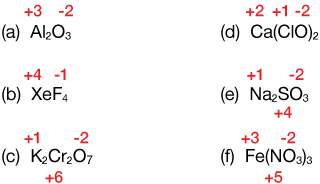Oxidation Numbers In Nh3

To understand the concept of oxidation numbers, particularly in the context of ammonia (NH3), it’s essential to delve into the basics of oxidation numbers and then apply this knowledge to the molecule in question.
Oxidation numbers, also known as oxidation states, are a way to keep track of the electrons during a chemical reaction. They represent the number of electrons an atom has gained or lost to form a chemical bond. In a neutral molecule, the sum of all oxidation numbers must be zero, while in an ion, the sum of oxidation numbers equals the charge on the ion.
For ammonia (NH3), determining the oxidation number of each atom involves understanding the rules for assigning oxidation numbers. The general rules are as follows:
- The oxidation number of a free element is always 0. This applies to atoms that are not combined with other elements.
- The oxidation number of a monatomic ion is equal to its charge. For example, the oxidation number of sodium (Na+) is +1, and that of chloride (Cl-) is -1.
- The oxidation number of oxygen in most compounds is -2. This is a general rule, but there are exceptions, such as in peroxides where oxygen has an oxidation number of -1.
- The oxidation number of hydrogen is typically +1, except in metal hydrides where it is -1. In compounds with hydrogen and non-metals, hydrogen usually has an oxidation state of +1.
- The sum of the oxidation numbers of all atoms in a neutral compound is 0. This rule is crucial for calculating the oxidation numbers in molecules like ammonia.
Given these rules, let’s calculate the oxidation number of nitrogen and hydrogen in NH3:
- Oxidation number of hydrogen: Typically, hydrogen has an oxidation number of +1 in compounds with non-metals.
- Oxidation number of nitrogen: Since NH3 is a neutral molecule, the sum of the oxidation numbers must be zero. With three hydrogen atoms, each having an oxidation number of +1, the total positive charge from hydrogen is +3. For the molecule to have a net charge of zero, nitrogen must have an oxidation number that balances this +3 charge.
Thus, we set up the equation as follows: Oxidation number of N + 3(Oxidation number of H) = 0. Substituting the oxidation number of H as +1, we get: Oxidation number of N + 3(+1) = 0, which simplifies to Oxidation number of N + 3 = 0. Solving for the oxidation number of N, we get Oxidation number of N = -3.
Therefore, in ammonia (NH3), the oxidation number of nitrogen is -3, and the oxidation number of hydrogen is +1.
Understanding oxidation numbers is crucial for predicting the-reactivity of substances, understanding redox reactions, and identifying the types of chemical reactions that can occur. This concept is fundamental in chemistry and is applied across various branches, including inorganic, organic, and biochemistry.
Additional Considerations
In practical terms, understanding the oxidation state of nitrogen in ammonia can help predict its reactivity and potential applications. For instance, ammonia can act as a reducing agent due to its ability to donate electrons, which is related to the negative oxidation state of nitrogen. This property makes ammonia useful in various industrial processes and chemical syntheses.
Moreover, the concept of oxidation numbers can be extended to other nitrogen-containing compounds, helping to predict their properties and behaviors. For instance, in nitric acid (HNO3), nitrogen has a +5 oxidation state, indicating a significant difference in its reactivity and stability compared to ammonia.
Conclusion
Oxidation numbers provide a powerful tool for understanding the electronic structure and reactivity of molecules. By applying the basic rules for assigning oxidation numbers, we can determine the oxidation state of nitrogen in ammonia as -3 and that of hydrogen as +1. This understanding not only deepens our insight into the chemical properties of ammonia but also into the broader principles governing chemical reactions and compound behaviors.
Frequently Asked Questions
What is the oxidation number of nitrogen in ammonia (NH3)?
+The oxidation number of nitrogen in ammonia (NH3) is -3.
How do you calculate the oxidation number of an element in a compound?
+To calculate the oxidation number, apply the basic rules: the oxidation number of a free element is 0, the oxidation number of monatomic ions equals their charge, oxygen is usually -2, and hydrogen is +1 (except in metal hydrides where it is -1). The sum of oxidation numbers in a neutral compound is 0.
Why is understanding oxidation numbers important in chemistry?
+Understanding oxidation numbers is crucial for predicting reactivity, understanding redox reactions, and identifying the types of chemical reactions that can occur. It helps in understanding the electronic structure and properties of molecules.
In conclusion, oxidation numbers are a fundamental concept in chemistry that helps in understanding the properties and behaviors of elements and compounds. By grasping how to calculate and apply oxidation numbers, one can deepen their understanding of chemical reactions and the underlying principles that govern them.


